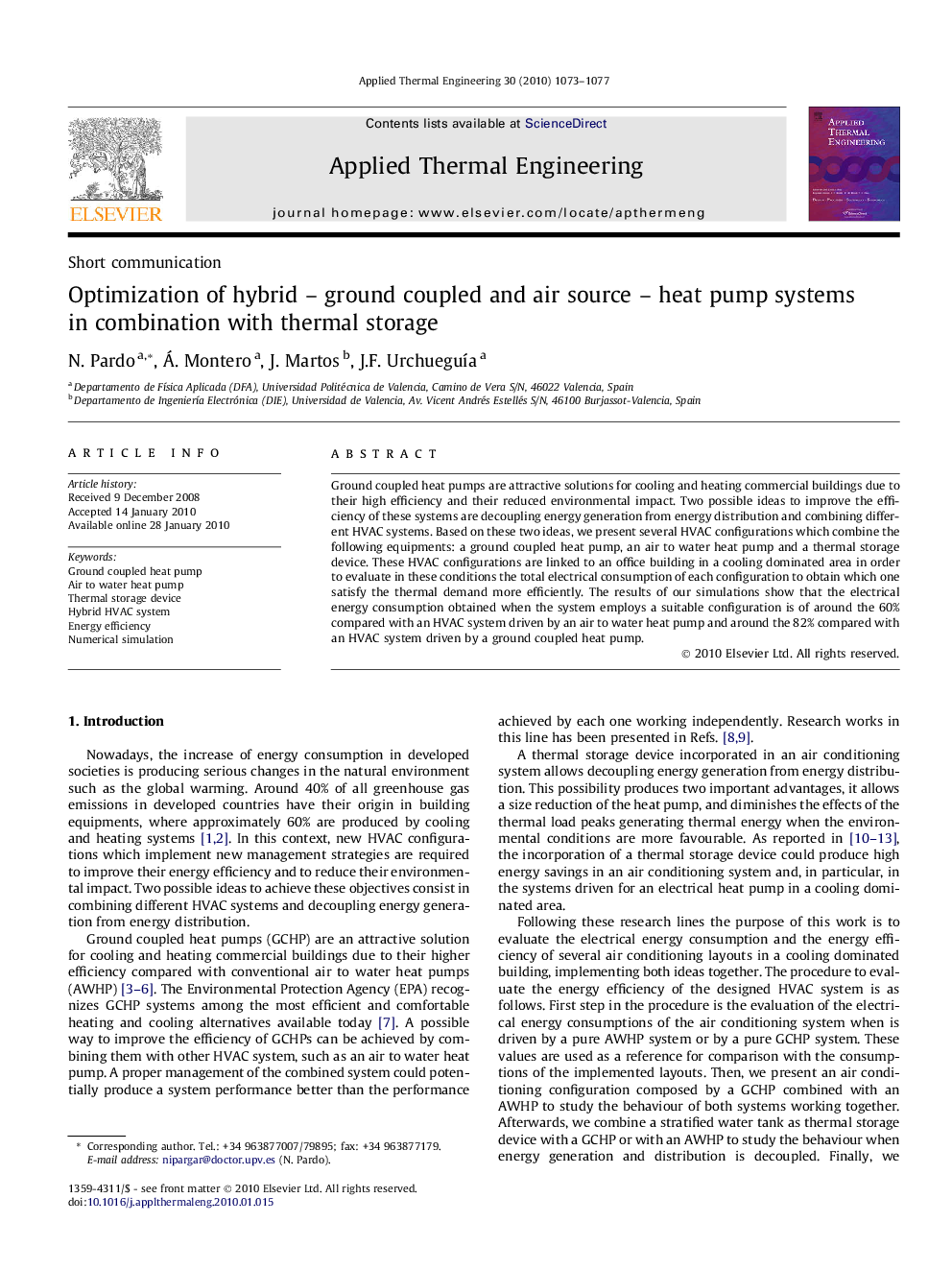| Article ID | Journal | Published Year | Pages | File Type |
|---|---|---|---|---|
| 648468 | Applied Thermal Engineering | 2010 | 5 Pages |
Ground coupled heat pumps are attractive solutions for cooling and heating commercial buildings due to their high efficiency and their reduced environmental impact. Two possible ideas to improve the efficiency of these systems are decoupling energy generation from energy distribution and combining different HVAC systems. Based on these two ideas, we present several HVAC configurations which combine the following equipments: a ground coupled heat pump, an air to water heat pump and a thermal storage device. These HVAC configurations are linked to an office building in a cooling dominated area in order to evaluate in these conditions the total electrical consumption of each configuration to obtain which one satisfy the thermal demand more efficiently. The results of our simulations show that the electrical energy consumption obtained when the system employs a suitable configuration is of around the 60% compared with an HVAC system driven by an air to water heat pump and around the 82% compared with an HVAC system driven by a ground coupled heat pump.
